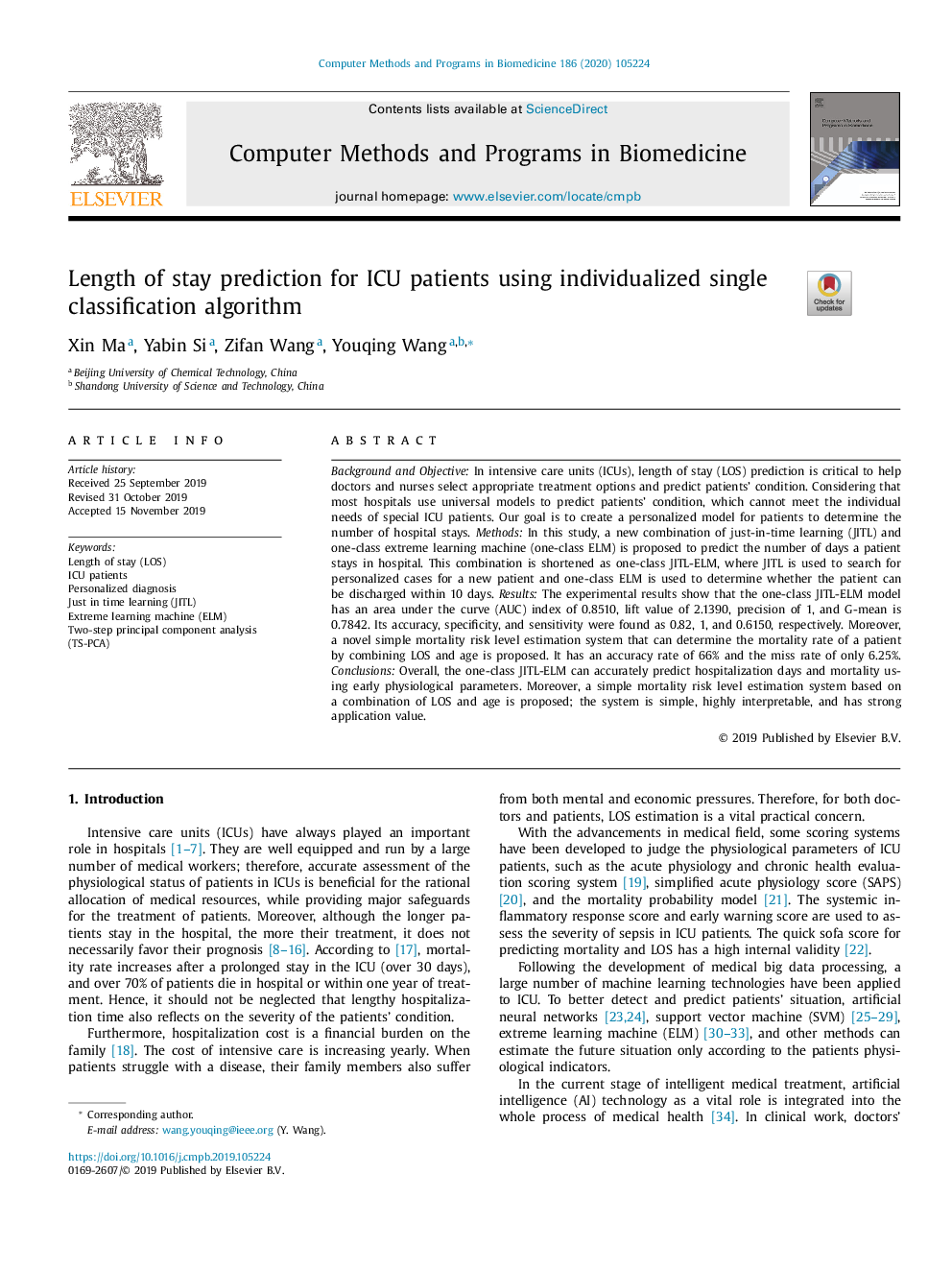| Article ID | Journal | Published Year | Pages | File Type |
|---|---|---|---|---|
| 13433038 | Computer Methods and Programs in Biomedicine | 2020 | 11 Pages |
Abstract
Background and Objective: In intensive care units (ICUs), length of stay (LOS) prediction is critical to help doctors and nurses select appropriate treatment options and predict patients' condition. Considering that most hospitals use universal models to predict patients' condition, which cannot meet the individual needs of special ICU patients. Our goal is to create a personalized model for patients to determine the number of hospital stays. Methods: In this study, a new combination of just-in-time learning (JITL) and one-class extreme learning machine (one-class ELM) is proposed to predict the number of days a patient stays in hospital. This combination is shortened as one-class JITL-ELM, where JITL is used to search for personalized cases for a new patient and one-class ELM is used to determine whether the patient can be discharged within 10 days. Results: The experimental results show that the one-class JITL-ELM model has an area under the curve (AUC) index of 0.8510, lift value of 2.1390, precision of 1, and G-mean is 0.7842. Its accuracy, specificity, and sensitivity were found as 0.82, 1, and 0.6150, respectively. Moreover, a novel simple mortality risk level estimation system that can determine the mortality rate of a patient by combining LOS and age is proposed. It has an accuracy rate of 66% and the miss rate of only 6.25%. Conclusions: Overall, the one-class JITL-ELM can accurately predict hospitalization days and mortality using early physiological parameters. Moreover, a simple mortality risk level estimation system based on a combination of LOS and age is proposed; the system is simple, highly interpretable, and has strong application value.
Related Topics
Physical Sciences and Engineering
Computer Science
Computer Science (General)
Authors
Xin Ma, Yabin Si, Zifan Wang, Youqing Wang,
